
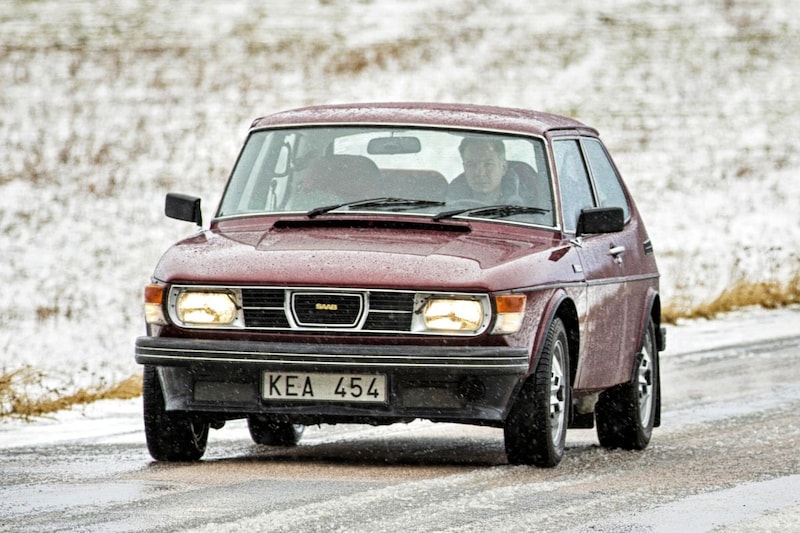


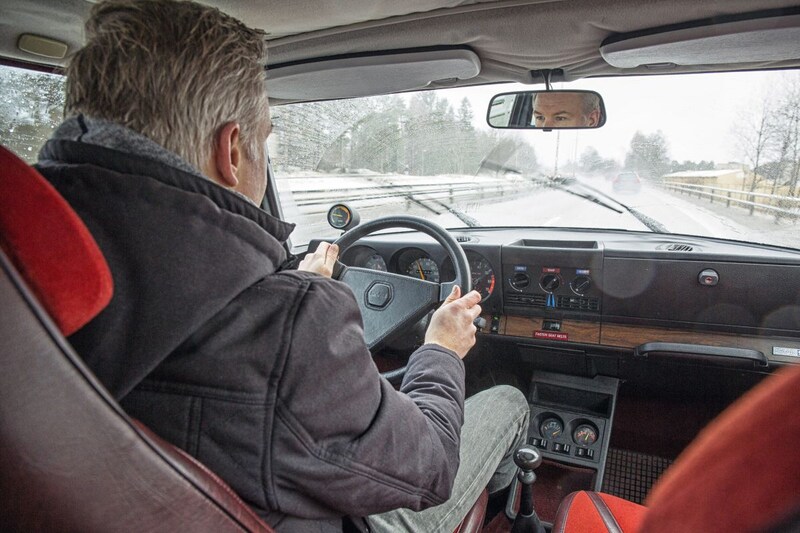


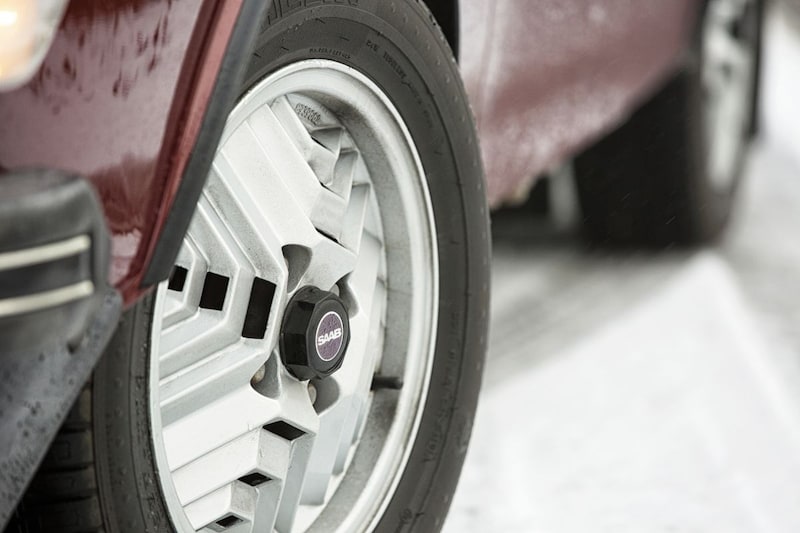

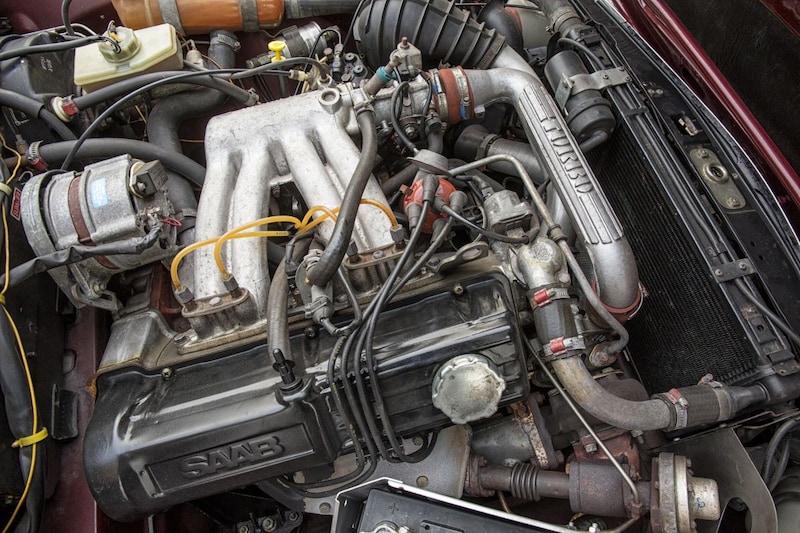
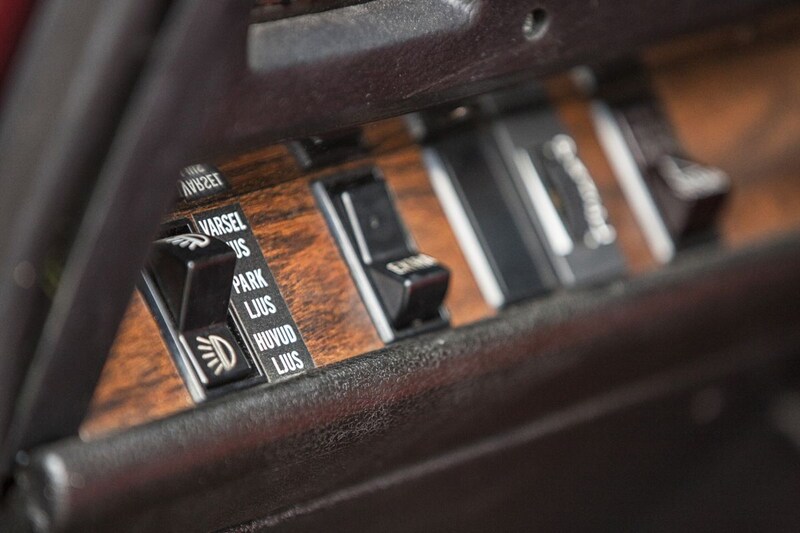
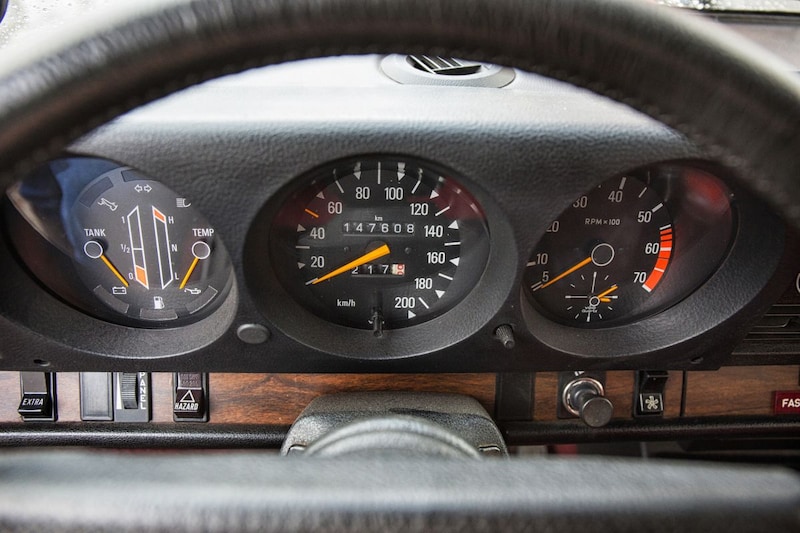
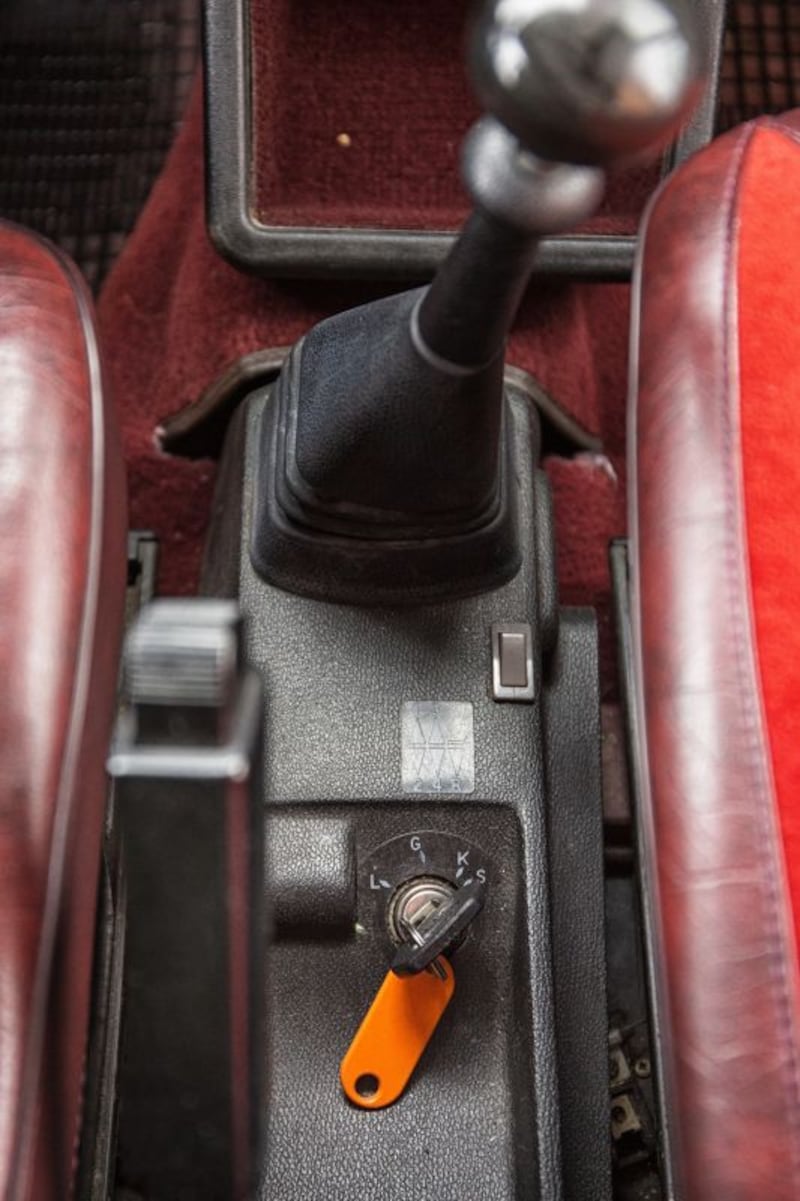
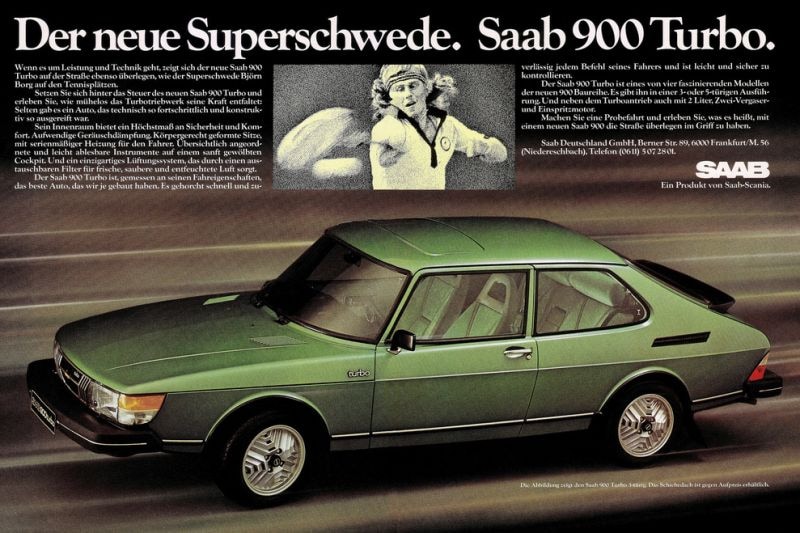
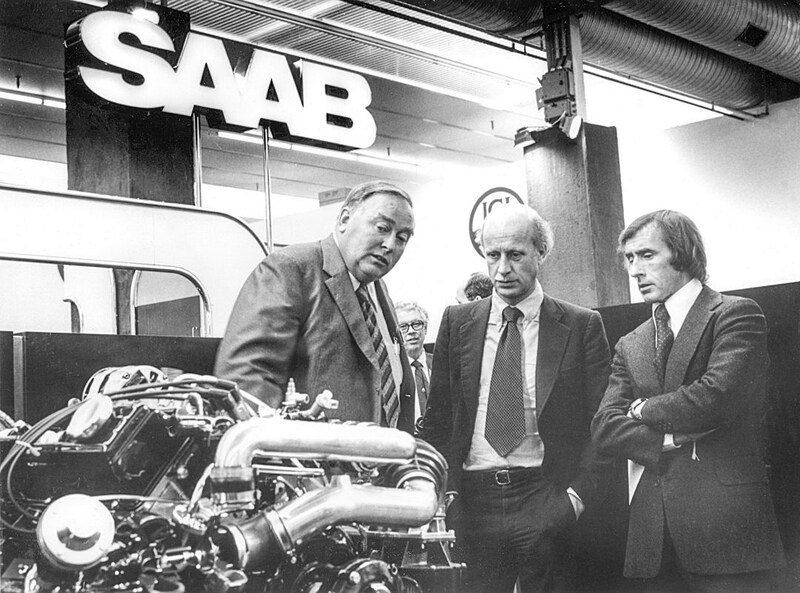
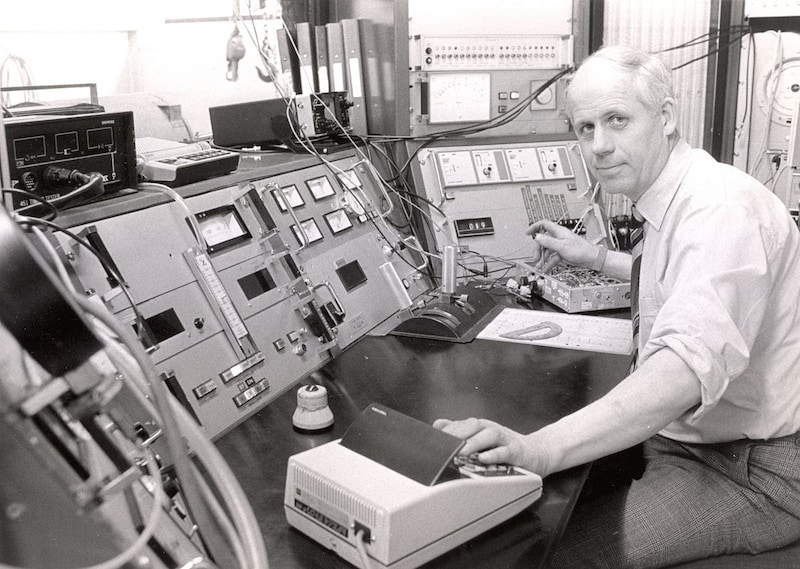
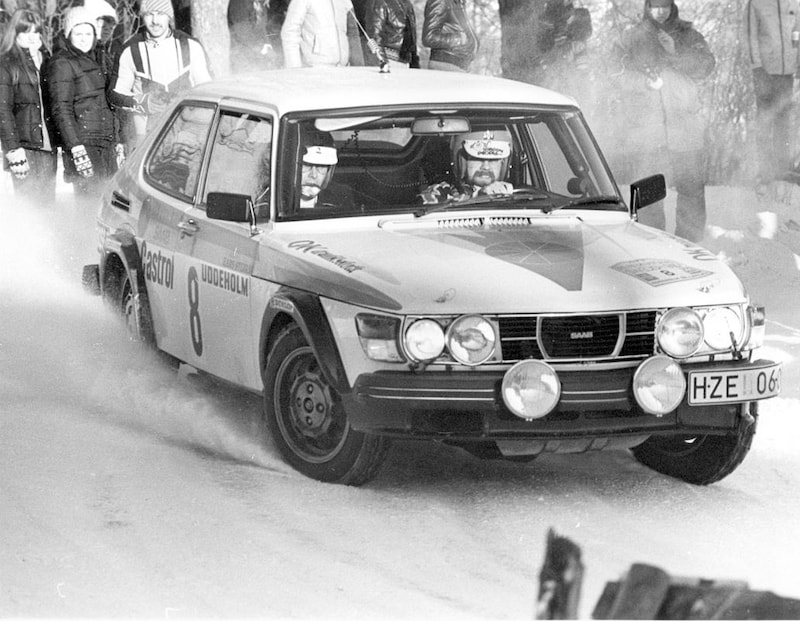

In 1978 Saab introduced a model that caused quite a bit of noise: the 99 Turbo. An apparently brave hatchback that makes BMWs, Alfa Romeos and Porsches the snot for the eyes. In its natural Swedish habitat we go for a tour with the car that gave the image of Saab a huge boost.
On YouTube you can find a great video that demonstrates the power of the four-cylinder turbo engine of the Saab 99. The promo video is discussed by BBC presenter Raymond Baxter. We meet the former jet fighter pilot and rally driver on an airstrip in the Swedish town of Mantorp, about halfway between Gothenburg and Stockholm. There, a black 99 Turbo is ready to compete against eight (semi) competitors of all kinds: a Porsche 924, Lancia Beta, Alfa Romeo Alfetta GT, Audi 100 5E, Mercedes 280, BMW 528, Volvo 264 and Dodge Monaco. None other than rally heroes Stig Blomqvist and Per Eklund have been hired to squeeze the most out of all test cars, with – you wouldn’t expect it – the Swedish entry emerged as the big winner. Although the banana is a bit crooked here and there, the message of the promotional video is clear: the Saab 99 Turbo can not only compete with the established order in terms of speed and handling characteristics, it even manages to outdo them.
It is of course not the Saabs to boast that with the 99 Turbo you put renowned sports cars in their shirt, so the extra pulling power that the turbocharger adds to the four-cylinder is mainly sold as ‘safe’; after all, you need less time to catch up. The fact that the engine is more economical and (therefore) less polluting than a comparable six-cylinder is also nice in the brochure. But arguments like that naturally go in one ear and out the other with petrolheads. They see a civilian car with the performance of a sports car. A wolf in sheep’s clothing, a flamboyant toreador dressed as a taciturn Eskimo. And secretly, Saab is quite a bit proud of its modestly dressed powerhouse, as evidenced by the phrase we encounter in an English brochure: ‘The Saab Turbo has robbed sports car drivers of their exclusive right to fast cars with turbocharged engines’. Turbo is the new magic word.
Need
A turbocharged petrol engine is not new in 1978. As early as 1962, General Motors provided the 3.5-liter V8 of the Oldsmobile Jetfire and the related Chevrolet Corvair Monza with a turbo. Because the reliability leaves a lot to be desired, these models are short-lived. A decade later, BMW and Porsche are reviving the concept with the 2002 Turbo (1973) and 911 Turbo (1975). In those years, engineer Per Gillbrand commutes back and forth about 1,300 kilometers to the north between Trollhättan, where the Saab factory is located, and the Scania factories in Södertälje, near Stockholm. The truck manufacturer has been part of the Saab-Scania AB family since 1969 and when developing the turbo engine, Gillbrand, also known as Mr. Turbo, grateful use of their knowledge of turbo technology. Incidentally, developing a turbo engine stems from necessity; the small Saab lacks the financial means to develop a stronger, completely new (six-cylinder) engine itself.

Saab 99 Turbo engine
After 1.5 million test kilometers in a wide variety of conditions and a six-month field trial by 100 ‘ordinary’ drivers in Sweden, Germany, Finland, Switzerland and the USA, the Saab 99 Turbo is ready for presentation to the general public in September 1977 . Visitors to the Frankfurt trade fair will marvel at the specifications of the 99, even more so in the form of the three-door Combi Coupé. A power of 145 hp, which is almost a quarter more than the turbo-free version of the two-liter delivers. And that torque: 235 newton meters, almost half more! All this thanks to Bosch K-Jetronic fuel injection and a Garrett AiResearch T3 compressor that whistles its tune from around 1,500 rpm. The paddle wheel can rotate 144,000 rpm, the maximum turbo pressure is 0.8 bar (the rally version drove double). A striking feature is the wastegate, a bypass valve that removes excess exhaust gas pressure and thus prevents combustion temperatures from rising too high. The compressor is clearly visible under the hood, otherwise the ‘Turbo’ inscription in the signature font on the intake tube points out that this is not a standard two-liter block.
Just on summer tires
Few car museums will lend their belongings when the roads are white and the next snowstorm looms in the distance. The Saab museum in Trollhättan is the exception, as it turns out when we report there with little hope of a nice report with the 99 Turbo. To our no small surprise, the car is just ready for us, the confidence in our driving skills is apparently great. Especially when we see that the characteristic Inca wheels are just summer tires… Our 99 Turbo is painted in Cardinal Red, the other option was black at the time and in the US you could also opt for light or dark gray. That dark red suits him well, it contrasts nicely with the white environment and also fits neatly with the houses in the picturesque village through which we drive.

Saab 99 Turbo interior
I take a seat in the large chair in an interior decorated with cozy red-brown-orange upholstery and furniture with a special motif in the velvet. The front and rear headrests are gigantic. The three-spoke steering wheel – unique to the Turbo – is soft in the heart. Airbag avant la lettre. Because the strongly curved forward is very far away from you and the roof extends far, the view of high placed traffic lights is downright miserable. This is offset by the thin, upright A-pillars; the view in your direct field of vision is great. The black plastic of the dashboard is interrupted by a horizontal wooden strip – call it ‘sporty functional’. Clear counters, sturdy click-clack buttons with Swedish inscriptions and in the center console two extra gauges for oil pressure and battery voltage. The three switches with ‘Extra’ on them appear to be empty. But all the foregoing naturally pales in view of the attraction of this Saab, the holy grail that stands out prominently on the left of the dashboard: the turbo pressure gauge.
Nice and mechanical
Time to go out and play. The steering wheel is quite flat and close to the dashboard. I sit quite high and shed my crown against the hanging canopy. Not an ideal seating position, but if Stig Blomqvist and Per Eklund could handle this, then who am I to complain? Fortunately, the main road is free of snow, so we do not have to worry that our potent front-wheel drive on its summer slippers will grind without a chance at a dot of gas, or slide uncontrollably straight ahead in a bend. I slowly push the accelerator down and feel the turbo slowly coming in. The engine sounds nice and mechanical, it builds up its powers nicely gradually. At the top left of the dashboard, the needle of the small VDO meter is carefully hitting the red area. You notice more of the turbo than you really hear it, the Saab continues to accelerate energetically. The block is at its best around 4,000 rpm and although it is not really fast, you experience it that way. I get 150 km / h in third place. By Swedish standards a highly illegal speed, let me just give up a bit. Shifting is smooth, sometimes a bit hakery, but you get used to that quickly. The steering is quite heavy but is nice and direct, especially for this type of car. Striking is the short turning circle, the wheels seem to be almost perpendicular to the car when turning a street. That feels a bit unnatural because you know that the drive is also going here. But you can feel from everything that this car is robust, it has heavy bones and can have a touch. The chassis with its Bilstein dampers is sturdy, this is really a sporty sedan. To use the car’s full potential, you have to give it a good fuck. But let’s not do that today, after all we are on the way with a museum piece …

Saab 99 Turbo
With a price of about 35,000 guilders, the Turbo was the most expensive Saab 99; the 99 L of 100 hp cost 23,000 guilders in 1978. In the US, where 40 percent of the Turbos went, they know how to characterize the car: “ At a price of $ 9,998 the Turbo is not cheap – but it is faster than anything that is cheaper and cheaper than anything that is faster. ‘.